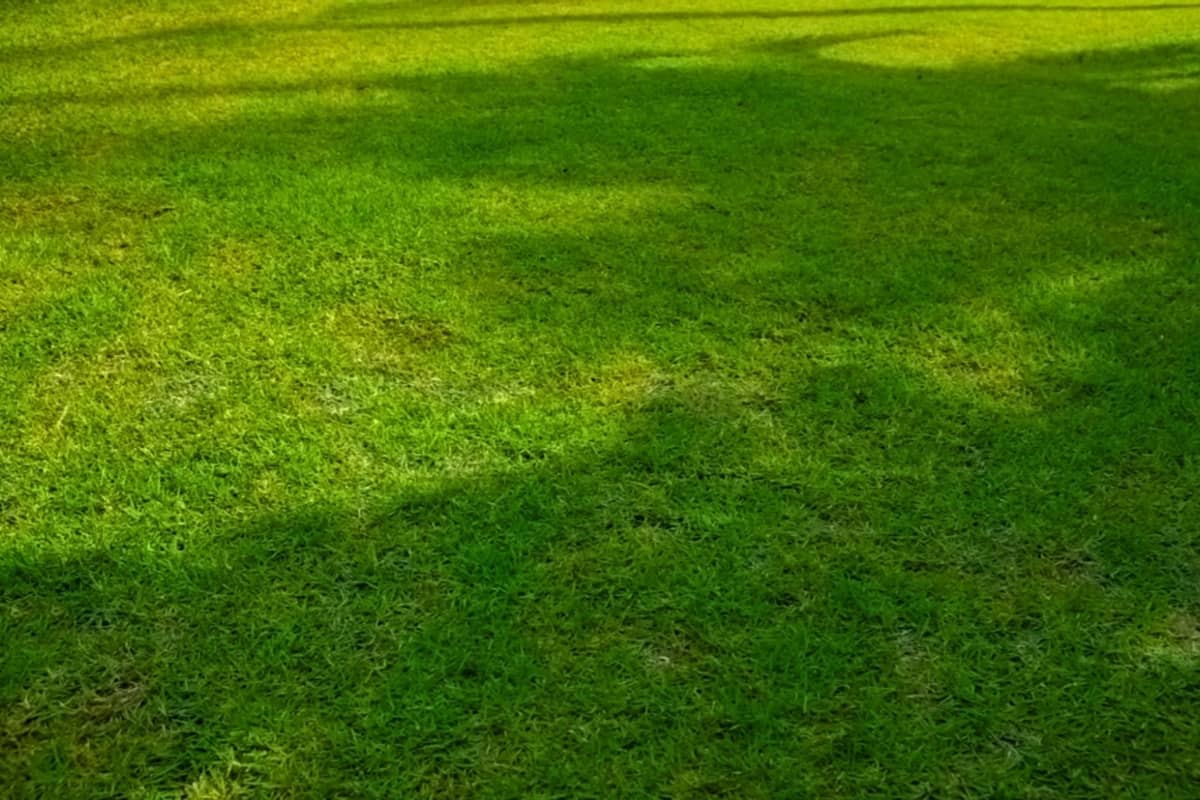
In this article
Planting St. Augustine grass in shaded lawns
St. Augustine grass thrives in both sunny and shaded lawns. It’s the most shade-tolerant of all warm-season grasses. Four to six hours of direct sunlight will help your St. Augustine grass lawn flourish. It grows best in subtropical, humid areas during spring and summer.
- St. Augustine grass has excellent shade tolerance. However, it is not ideal for completely shaded areas where buildings, walls, or other solid objects block sunlight.
- It may grow well in a partially shaded lawn with trees, bushes, or slat fences that allow some sunlight to pass through.
- If there’s no direct sunlight, six to eight hours of partial sun exposure is necessary for your grass to grow.
Caring for your St. Augustine lawn
St. Augustine grass (Stenotaphrum secundatum) belongs to the fifth-largest plant family Poaceae.
This dark green grass has coarse, textured blades and creates a thick, carpetlike turf. It’s the most popular warm-season grass in the southern US, especially in Florida and Hawaii.
Special care is a must to keep your St. Augustine lawn lush and healthy in shady conditions.
- Maintain a mowing height of 4 to 5 inches. This allows St. Augustine grass to better capture sunlight.
- Apply a gentle, slow-release fertilizer. The best fertilizer for St. Augustine grass contains smaller nitrogen amounts and more potassium for optimal growth.
- Water less frequently, ideally around 15 minutes twice a week, to avoid overwatering and disease. Shaded areas are typically cooler with lesser water evaporation.
- Get rid of invasive weeds. They will rob your St. Augustine grass of sunlight and nutrients.
- Minimize foot traffic in shady areas. Keep your pets from peeing in shaded spots on your St. Augustine lawn.
- Ensure the soil is well-drained for better grass growth.
Varieties of St. Augustine grass with good shade tolerance
Different cultivars of St. Augustine grass have distinct characteristics.
Here are the species of St. Augustine grass with the best shade tolerance:
Palmetto St. Augustine
- Semi-dwarf grass with an emerald-green color
- Excellent shade tolerance
- Moderate wear tolerance
CitraBlue St. Augustine
- Blue-green color
- Excellent shade, wear, and drought tolerance
- Lateral growth
Raleigh St. Augustine
- Medium-green color
- Excellent shade tolerance
- Moderate wear and drought tolerance
The following cultivars still do well in partial shade than other warm-season turfgrasses. However, they need more sunlight than the above varieties.
ProVista St. Augustine
- Deep green color
- Moderate shade tolerance
- Dense, horizontal growth pattern
- Requires half the mowing of typical St. Augustine turf
Seville St. Augustine
- Dark-green color
- Finer texture than other St. Augustine varieties
- Moderate shade, wear, and drought tolerance
- Moderate injury recovery
Floratam St. Augustine
- Dark-green color
- Moderate shade, wear, and drought tolerance
FAQs
Why is St. Augustine grass more shade-tolerant than other warm-season turfgrasses?
St. Augustine grass can grow more densely than other warm-season turfgrasses, making it more shade-tolerant. It has broad, flat leaves that soak up sunlight in shady spots. Additionally, it has an extensive root system that absorbs nutrients and moisture in low-light conditions.
Is St. Augustine grass low maintenance?
St. Augustine grass is relatively low maintenance. Regular mowing and proper fertilization will help keep your lawn beautiful and thriving.
